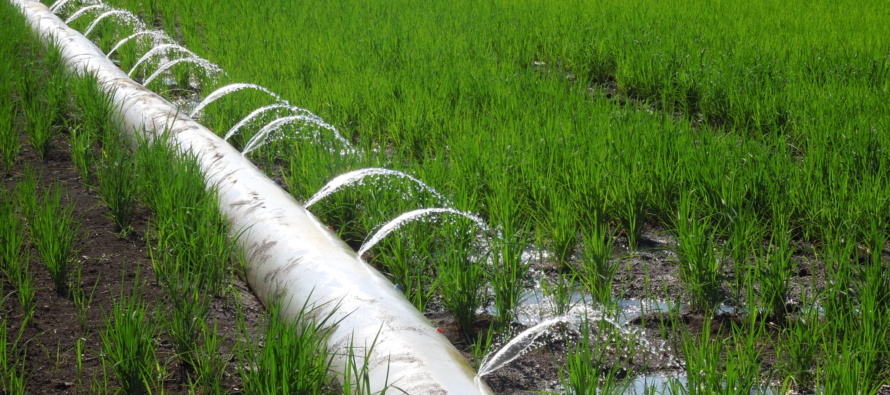Furrow Irrigated Rice On Farm Studies

Related Articles
- Rice Variety Trial Results For 2010, Plus Rice Research Report 0
- Rice Seeding Rate Calculator and Chart 0
- 2011 Rice Burndown Considerations 0
Latest Tweets
Last week we started our conversation concerning Furrow Irrigated rice (row rice), this week we look at the on farm studies. “On farm” research trials attempt to look at the real world. “On farm” trials evaluate real world data, uncontrollable and sometimes un-explainable, but hopefully with enough time and locations, the data gives producers a glimpse of what they can expect on their farm. These “on farm” results are the averages across locations of different producers management styles, different consultants, different varieties, different planting dates, all averaged together to create a picture of what furrow irrigated rice may look like on your farm.
The furrow irrigated trials consisted of thirty five locations from 2016-2018. Yield data was reported from all thirty five location while water use data was collected on sixteen location in 2017 and 2018. Producers were required to have two adjacent fields planted at the same time with the same variety. One of the fields was furrow irrigated and the other irrigated conventionally utilizing multiple inlet and alternate wetting and drying irrigation management. The producers managed the furrow irrigated side utilizing irrigation instructions from the researcher as a guide. The researcher made the irrigation decision on the AWD field based on the Pani tube measurements. (During the 2018 year, a pilot program for irrigation timing was implemented utilizing water depth measurement sensors relaying water depth information to an iPhone. In 2019, full implementation is expected with this technology.) All agronomic practices on both fields were controlled by the producer and his consultant. Presented are the results.
This first economic slide takes into consideration that you utilize beds from the previous soybean crop, add additional nitrogen fertilizer, and notill soybeans the following year after the rice crop. Utilizing furrow irrigation yielded a $36.99 profit over conventional rice under this scenario.
This economic slide considers producers refresh soybean beds before row rice, apply additional nitrogen fertilizer, apply an additional herbicide application for broadleafs weeds, and refresh beds prior to the soybean crop following rice. Utilizing furrow irrigation yielded a $1.25 profit over conventional rice under this scenario.
A number of these trials were on grades greater than two-tenths, next week we will talk about that.










Let me tell You a sad story ! There are no comments yet, but You can be first one to comment this article.
Write a comment